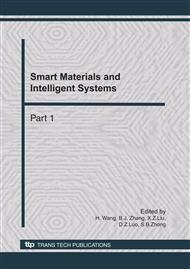[1]
Ye Qiusun. Researches & Applications of 3D Spatial Solid Reality Pictures, Computer Aided Engineering, Vol. 2, No. 4 (1993): 22-31.
Google Scholar
[2]
The Master Topics on Numbers, Interviews Records of MA Zhiming Academician of CAS (Chinese Academy of Science)/President of CMS (Chinese Mathematical Society)/Vice Chairman of IMU (International Mathematics Union), CCTV-10, Feb. 4 (2004).
Google Scholar
[3]
Ye Qiusun. Research & Application On the VCN of n-Bits (Figures), the 3rd conference on Fuzzy Mathematics & System Science in middle-south area of China, Mathematics & Its Application, 1995(10): 140-149.
Google Scholar
[4]
Qiusun Ye. Research & Application On the Variable Carrying Numbers, IEEE International Conference On Neural Networks & Signal Processing(ICNNSP'95), International Academic Publishers, Nanjing, China, Vol. 2, 1995(12): 910-914.
Google Scholar
[5]
Wentsun Wu. Mechanization of Mental Work & Modernization of Science and Technology in Times of Computer, Special invited paper in Proceedings of CAAI10, Guangzhou, China, 2003(11).
Google Scholar
[6]
Qiusun Ye. Research & Application of Breadth-first Search and Depth-first Search, Proc. of the 3rd Pacific Rim International (IFIP TC12/IEEE CS/CCF) Conference On Artificial Intelligence, International Academic Publishers (IAP), Shi Zhongzhi Editor-in-Chief of PRICAI'94, Beijing, China, Vol. 1(1994).
Google Scholar
[7]
Kingsun Fu (USA), Zhixng Cai, Guangyou Xu: Artificial Intelligence & Its Application. Beijing: Press of Tshinghua University of China, 1988(7).
Google Scholar
[8]
Ye Qiusun. Digital Expression of Visibility of 3D True Diagram, Computer Aided Engineering, Vol. 6, No. 4 (1997): 38-44.
Google Scholar
[9]
John Staudhammer(USA), Qunsheng Peng (China) Eds: Proc. of the second international conference on CAD&CG (IAP), Hang zhow, China, 1991(9).
Google Scholar
[10]
Cai Wen, Yang Chunyan, Lin Weichu: Extension Method of Engineering, Science Press of China, 1997(10).
Google Scholar
[11]
Guan Qingxiang. The Generation and Shadow Display of Graphics for Objects of Axial Symmetry, Journal of Computer Aided Design & Graphics, 1990(1).
Google Scholar
[12]
Yao Kangrong. Computer Aided Design & Grain Figures System, Computer Applications & Software, 1993(6).
Google Scholar
[13]
Liang Youdong, Shi Jiaoying, Peng Qunsheng translated, Algorithm Basis of Computer Graphics[USA], Science Press of China, 1989(12).
Google Scholar


